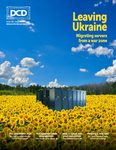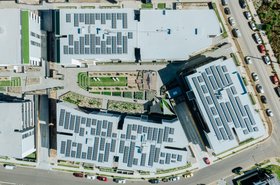As the power sector transitions and supply becomes less reliable it raises a question of whether big energy users such as data centers at in danger of becoming obsessed with ‘new shiny thing’ solutions while ignoring proven sustainable technologies.
The sustainable rebuild and replacement of generation, transmission and distribution power infrastructure is just beginning.
Already it is sparking warnings about the difficulty of the journey to net zero with senior power industry executives pointing to surging costs and degrading reliability as intermittent renewable energy resources (RERs) replace traditional power stations.
More grid disturbances coming
And just as this fragility is being introduced as part of the cure to climate change, the disease itself is set to create prolonged blackouts through fires, floods, and other more extreme weather events.
In short, the path to a carbon neutral power industry, coupled with ageing transmission infrastructure is leading to increased numbers of grid disturbances (already up 12-fold in the last decade in the US) meaning the US economy could be on course for a $200bn annual economic hit caused by outages.
We are entering a time when there’s going to be a sustained period of heightened grid unreliability as we make the necessary transition to upgrading grid infrastructure and migrating away from fossil fuels.
Power generation is changing and so too is the grid meaning reliance on locally based energy storage is about to grow exponentially.
For example, the very first objective in the US federal government’s executive order ‘Clean Energy Economy plan by 2030’ states: “100 percent carbon pollution-free electricity (CFE) by 2030, at least half of which will be locally supplied clean energy to meet 24x7 demand.”
But speak to anyone in the back-up power industry and they will say quietly that orders for generators and battery storage are strong because “today, and at the end of the day, people need reliable power to run their businesses, data centers, hospitals, and factories and if they can’t get it from the grid they will seek reliable alternatives.”
If the grid is unstable, then business knows it must generate its own power. Clearly diesel powered gensets are not a long-term solution and makers of generators being supplied today are moving to Hydrotreated Vegetable Oil (HVO), Liquid Natural Gas (LNG) gas conversion, natural gas/hydrogen mixes and eventually pure hydrogen.
Local energy
The clean energy objectives of energy sector transition to zero carbon require radical change to the US generation and grid systems. These will require Gigawatt hours (GWh) of energy storage at a local level.
Much of this storage will be application specific. To be both clean and protect against outages locally based energy storage is intrinsic to success whether in microgrids or industrial applications. Storage choices pose tough questions about how ‘traditional’ industries such as large manufacturing and processing will store energy locally in their factories and plants. For businesses and industries which must keep running while eradicating carbon from their operations reliance clean local generation and energy storage will grow.
Energy storage options
For the data center operator, whether they are commercial, enterprise, or hyperscale engineers and consultants exploring the market for the most sustainable energy storage technologies may find themselves short on options.
In the power chain climate impact meets reliability concerns about Uninterruptable Power System (UPS), and back up energy storage becomes a serious sustainability conversation.
There is much promising research and many great developments in the field of new energy storage technologies. Emerging battery tech such as Flow, Metal-Air, Sodium-Sulphur, Nickel Zinc and others show promise for particular applications. Liquid Air and Compressed Air Energy Storage could well be suitable for data centers and other environments. However, these are in still in development and may not be available soon and remain to be proven for those making long term decisions today.
Existing and new battery technologies come with questions. For example, Li-ion and Valve Regulated Lead Acid (VRLA) battery technologies deployed at scale need energy hungry cooling. There are questions around cradle to grave life cycle analysis of new batteries. What is the total cost of ownership (TCO) – in terms of climate impact starting with the carbon and financial cost of raw material extraction and processing. What are the costs of high maintenance needs over the operational lifespan, which can be decades? What are the end of life disposal and recycling options? Will the technology suit the application needs of large-scale and long-term industrial and data center deployments?
Then there is the question of time. Do firms faced with the prospect of a more fragile grid who are planning for new capacity have time to wait?
ESG realities require solutions today
As industries take on board new Environmental Sustainability and Governance (ESG) realities from emerging carbon and climate impact reporting regimes such as the disclosure proposals from the Securities Exchange Committee (SEC), the questions being asked about energy storage need to change:
- What clean energy storage solutions are available now?
- What is the embodied carbon cost of different energy storage technologies?
- What is the emissions profile over the lifetime of operation?
- Can the components and raw materials be recycled or reused using circular methods?
The climate crisis is forcing data center businesses to think and act long term. And for critical power infrastructure operations that means thinking about the true cost of today’s energy storage infrastructure choices and what they will be when we reach 2030 and beyond.
The new shiny thing is not always the best solution.





